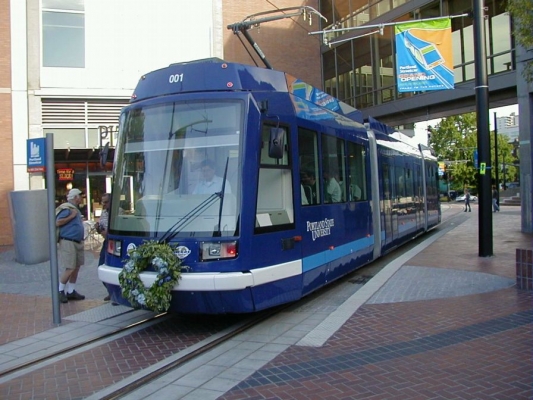
LRT and BRT and CRT and SCT ... Oh My! A sneak peak into the development outcomes associated with different fixed-guideway transit systems
PRESENTATION ARCHIVE
For nearly three years, researchers supported by the National Institute of Transportation and Communities have been analyzing the development outcomes associated with light rail, bus rapid, commuter rail, and street car transit in about 20 metropolitan areas ranging from 500,000 to 5 million people. Development outcomes include: jobs by economic sector and wage levels; population by key household types and householder age; and market-based property values and rent levels. Their analysis is longitudinal allowing for comparisons of shares and shifts in shares over time, as well as the extent to which transit-served corridors are more resilient to such economic shocks as the Great Recession than comparable corridors or their metropolitan areas as a whole. This "sneak peek" Webinar will showcase key findings before they are published.
NITC research project: National Study of BRT Development Outcomes
 Arthur C. Nelson is professor of urban planning and real estate development at the University of Arizona where he serves as associate dean for research in the College of Architecture, Planning and Landscape Architecture. He is also presidential professor emeritus of city & metropolitan planning at the University of Utah. For NITC, HUD, and other sponsors, Dr. Nelson and his team have pioneered new insights into how the residential market values proximity to rail transit (which extends well beyond the customary half-mile circle), the economic development implications of bus rapid transit, and new measures of TOD effects on socio-demographic and development outcomes.
Arthur C. Nelson is professor of urban planning and real estate development at the University of Arizona where he serves as associate dean for research in the College of Architecture, Planning and Landscape Architecture. He is also presidential professor emeritus of city & metropolitan planning at the University of Utah. For NITC, HUD, and other sponsors, Dr. Nelson and his team have pioneered new insights into how the residential market values proximity to rail transit (which extends well beyond the customary half-mile circle), the economic development implications of bus rapid transit, and new measures of TOD effects on socio-demographic and development outcomes.
